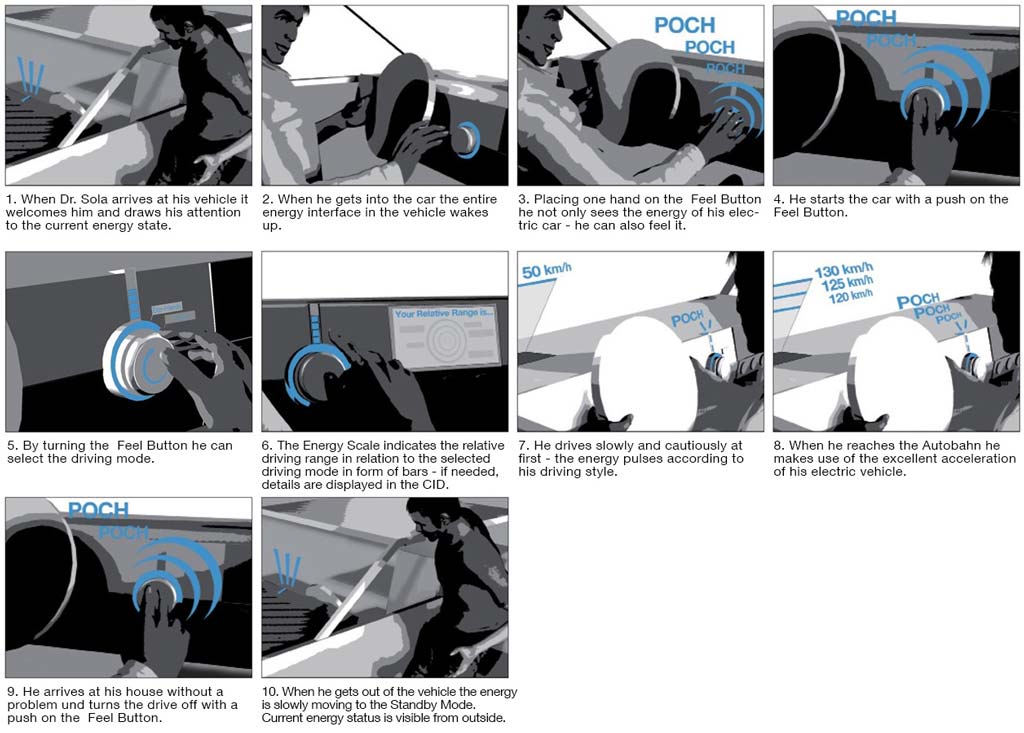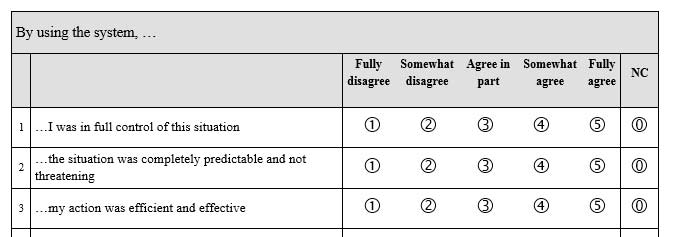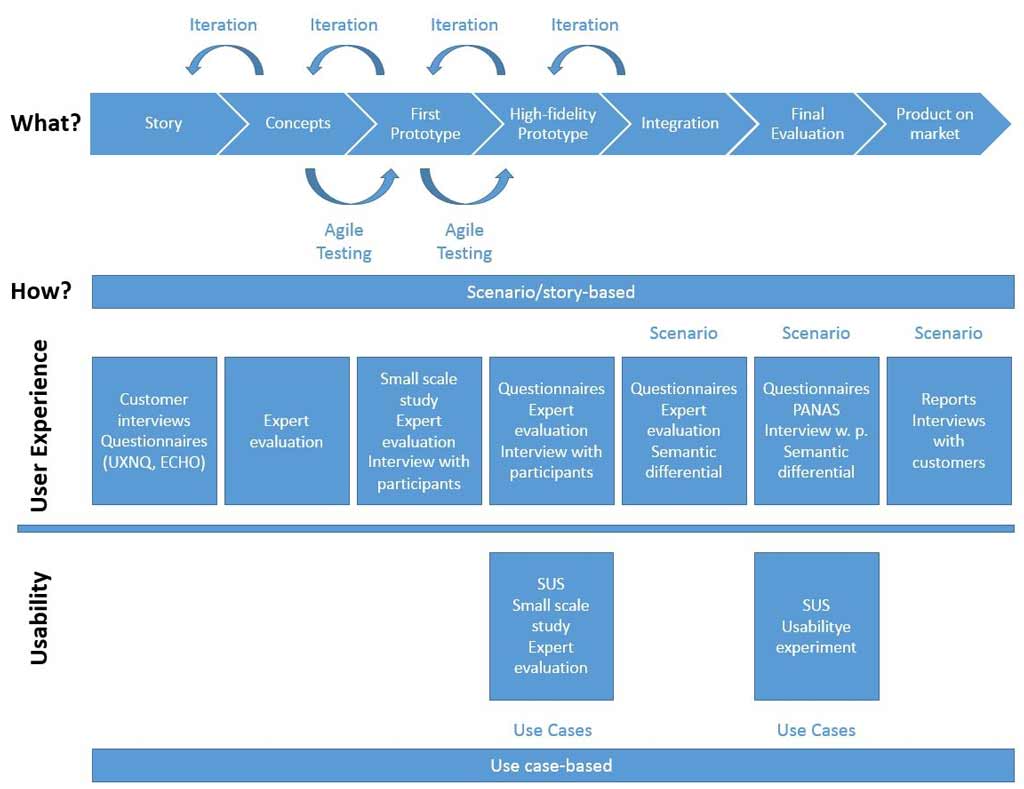Evaluate the Story.
Is the story experienced as intended?
Why.
Before you continue to use the story make sure that independent users relive the experience as intended.
What.
Present the story to a sample of people and evaluate the communicated experience afterwards.
How.
Story, motives, needs.
Draw a representative sample from the target group to validate the story. For the highest possible representativeness it would be beneficial to divide the samples into classes (for example, income brackets or age groups). The share of participants in the sample from one class should represent the share of the class in the customer group.
Present the story to this group in form of a written text, storyboard or video and verbalize it to the extent needed. It is also possible to enact the storyline together with the participants. For both variants, participants should project themselves into the role of the acting characters in the story and try to relive the presented experience. This is important because the story creates the context which becomes an experience in combination with the product. It is important that it is not suggested to the participants at any time what kind of experience the story is supposed to convey.
Ask the test persons if they consider the story to be realistic and what experience it generated for them. You can also ask the participants about possible misunderstandings or problems of comprehension. Ask all of the test persons the same questions in the same sequence. The respondents can answer freely and are thus able to express their overall impression without being restricted in their answer options. If necessary, add closed questions (e.g. yes/no questions).
Use questionnaires (e.g. UXNQ, ECHO) with rating scales (so-called Likert-scales) to obtain quantitative and thus comparable results. Formulate the needs or motives as statements in the questionnaires, to which the degree of approval is listed on a scale from 1-5. Advantages are that experiences from different stories are comparable and that need fulfillment can be expressed quantitatively. Another possible method is the semantic differential which reflects quantitatively what participants associate with the story.
The story generates qualitative and quantitative statements regarding the experience and released emotions.
References
Körber, M., Eichinger, A., Bengler, K., & Olaverri-Monreal, C. (2013, June). User experience evaluation in an automotive context. In Intelligent Vehicles Symposium (IV), 2013 IEEE (pp. 13-18). IEEE.




